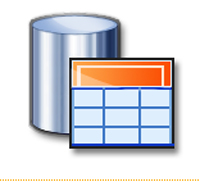Difference Between LDAP and Database
 LDAP vs. Database
LDAP vs. Database
Lightweight Directory Access Protocol (also known as LDAP) is an application protocol. This protocol is used specifically for querying data as well as modifying said data. This is performed by using directory services –that is, a software system that stores, organises, and provides access to the information that is in a directory– running through a TCP/IP. The main function of any directory is to act as a set of objects with logically and hierarchically organised attributes –such as the telephone directory.
A database is simply a collection of data that has one or more uses. There are few ways in which a database is capable of being classified. One of the most common is classifying the data in terms of the type of content is listed –for example, bibliographic, full text, numeric, or image. Another way in which a database can be classified is according to an examination of database models or database architectures. This is accomplished by specific software organising the data in the database according to said database model. The most common database model is that of the relational model –which is a database model based on first order predicate logic.
An LDAP session is instigated by a client. He accomplishes this by connecting to an LDAP server –this server is known as the Directory System Agent (or DSA). It is on the TCP port 389 by default. After the client has connected to the LDAP server, he sends an operation request to that server and in return the server sends a response (or number of responses). The client, however, does not have to wait for a response in order to send the next request –except in some cases. The server may, conversely, send the responses in any order. The server is also capable of sending ‘Unsolicited Notifications’ –meaning responses that are not responses to any request (before the connection times out, for example).
There are various database architectures that exist, and, in fact, many databases use a combination of strategies to function. Databases are comprised of software based ‘containers’. These containers are designed specifically to collect and store information in order to give users the power to retrieve, add, update, or remove the information automatically. Database programs are specifically designed to also give users the ability to add or delete any information necessary. Databases are usually in a tabular structure –meaning they consist of rows and columns.
Summary:
1. LDAP is an application protocol which queries and modifies data by using directory services; a database is a collection of data with on or more uses.
2. LDAP sessions are instigated by clients who connect to the LDAP server; there are various database architectures which many databases use in concert with one another.
- Difference Between VC++ and C++ - April 20, 2010
- Difference Between Aluminum and Carbon Arrows - April 15, 2010
- Difference Between SFTP and SCP - April 15, 2010
